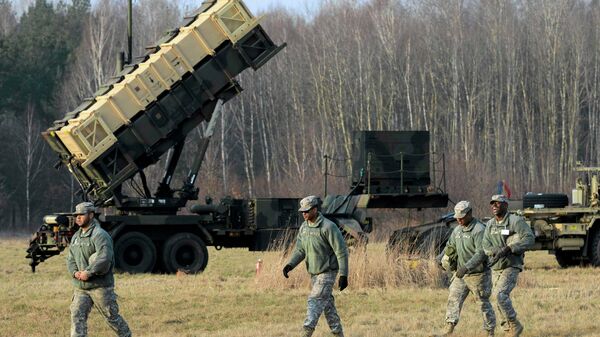Two months after 16 Iranian ballistic missiles struck the US’ Ayn al-Asad Air Base in Western Iraq, the US is finally preparing to move air defense systems into the country. The redeployment has required careful negotiation with Baghdad, as the Iraqi parliament voted in January for a resolution that US troops should leave the country.
‘Growing Threat’ From Iran
“Since May 2019, Iranian proxies and Shiite militia groups in Iraq have increased attacks on US interests and conducted scores of unmanned aerial system reconnaissance flights near US and Iraqi security force bases,” Marine Corps General and head of the US Central Command (CENTCOM) Kenneth McKenzie told the House Armed Services Committee on Tuesday.
“We are in the process of bringing air defense systems, ballistic missile defense systems into Iraq – particularly to protect ourselves against another potential Iranian attack,” he added, noting also a “growing threat posed by unmanned aerial systems, coupled with our lack of dependable, networked capabilities to counter them.”
The general told US lawmakers that Iranian drone capabilities are the region’s “most concerning tactical development,” reiterating Washington’s position that the September 2019 attacks on two Saudi oil facilities were carried out by Iran, despite the Yemeni Houthi movement claiming responsibility for the attack.
McKenzie provided no further details on the transfer of air defense systems, such as a timeline or even which kind of systems are being sent to Iraq.
Two of the most likely systems are the infamous MIM-104 Patriot, which once shot down Iraqi SCUD missiles during the 1991 Gulf War, or the Terminal High Altitude Area Defense (THAAD), which has been deployed in South Korea as a bulwark against potential North Korean missile attack.

A third option might have been Israel’s Iron Dome system, but earlier this week, the Pentagon ditched the idea of buying two more batteries after Tel Aviv refused to provide source code for the Iron Dome’s software, preventing its integration into the larger US Integrated Battle Command System, Sputnik reported, citing the Times of Israel.
However, Patriot batteries in Saudi Arabia also failed to engage the drones that attacked Abqaiq and Khourais oil fields in September 2019, as the missile systems are oriented above the horizon. In the weeks after the attack, the US began weighing the option of employing its own kamikaze drones as point air defense against other drones, since the Pentagon has so de-emphasized tactical anti-air capabilities in the decades since the end of the Cold War as to leave US forces without other options.
Baghdad Wary
The January 8 missile attack by Iran on US forces in Iraq was directly precipitated by a US airstrike near Baghdad International Airport on January 3 that killed Iranian Quds Force commander Gen. Qasem Soleimani, a hugely popular commander who led the fight against Daesh in Iraq and Syria. The airstrike also killed Abu Mahdi al-Muhandis, deputy commander of Iraq’s Popular Mobilization Forces, as well as several other high-ranking officials in the PMF.
Days later, the Iraqi parliament voted for a nonbinding resolution asking US forces to leave Iraq, which was reiterated by the country’s president and prime minister. In response, US officials doubled down on their presence in the country, rejecting the request and threatening to restrict Baghdad’s access to the Federal Reserve Bank of New York account in which Iraq’s oil revenues have been deposited.
“Our presence sends a clear signal about our capabilities and our will to defend partners and US national interests,” McKenzie said. “Going forward, it is CENTCOM’s objective to posture forces in the region with the operational depth to achieve a consistent state of deterrence against Iran and be adaptable to future Iranian threats.”
The US has roughly 5,300 troops deployed in Iraq, where they have been since they invaded in 2003 and overthrew Iraqi President Saddam Hussein.




